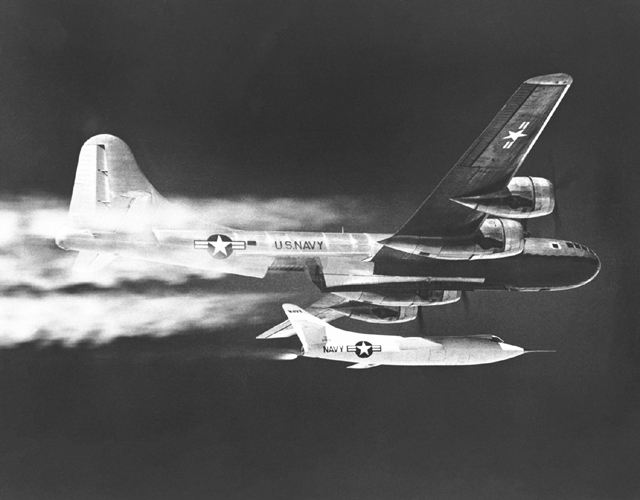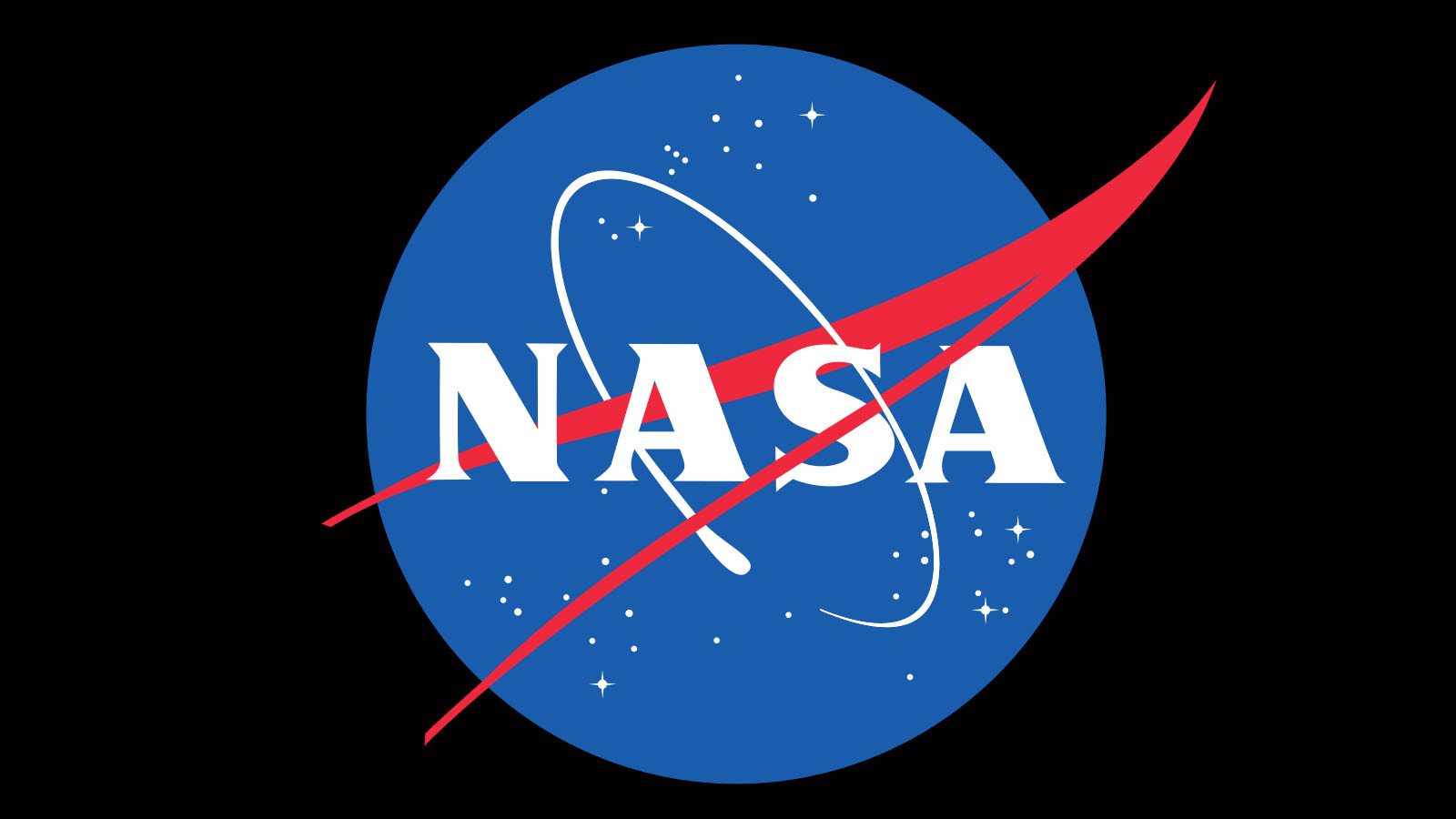Space History Photo: D-558-2 Dropped from B-29 Mothership

In this historical photo from the U.S. space agency, the D-558-2 #2 is launched from the P2B-1 in this 1956 NACA High-Speed Flight Station photograph. The D-558 Phase Two aircraft was quite different from its Phase One predecessor, the Skystreak.
German wartime aeronautical research records, reviewed in 1945 by Douglas Aircraft Company personnel, pointed to many advantages gained from incorporating sweptback wing design into future research aircraft. These findings along with wind tunnel studies performed by the National Advisory Committee for Aeronautics (NACA) at Langley Memorial Aeronautical Laboratory, resulted in the modification of the straight wing D-558-1 Skystreak contract to include investigation of sweptback wings.
Three redesigned aircraft were built by Douglas Aircraft Company under a contract from the Navy Bureau of Aeronautics and named D-558-2 Skyrocket. Originally all three were designed for ground take-off and used mixed power propulsion systems, consisting of a turbojet engine for take-off and a rocket engine, for greater speed in flight. The early flight tests were made using only the turbojet engine with the rocket engines added, when available.
As the flight program evolved, only one D-558-2 ended-up powered by a mixed rocket and turbo-jet propulsion system. From the experience gained during the X-1 rocket program and from Skyrocket mixed propulsion flights, the Navy and the NACA proceeded to have all three of the D-558-2 aircraft modified for air launching from a Navy-operated P2B-1 Superfortress (Navy version of the Air Force B-29), later becoming NACA 137. Although not designated an "X vehicle," the D-558-2 was essentially an X-vehicle aircraft in design and function, and contributed much to aeronautics research.
The National Advisory Committe on Aeronautics (NACA) was a precursor to NASA. NACA was created by Congress in 1915.
Each weekday, SPACE.com looks back at the history of spaceflight through photos (archive).
Breaking space news, the latest updates on rocket launches, skywatching events and more!

The National Aeronautics and Space Administration (NASA) is the U.S. government agency in charge of the civilian space program as well as aeronautics and aerospace research. Founded in 1958, NASA is a civilian space agency aimed at exploring the universe with space telescopes, satellites, robotic spacecraft, astronauts and more. The space agency has 10 major centers based across the U.S. and launches robotic and crewed missions from the Kennedy Space Center in Cape Canaveral Florida. Its astronaut corps is based at the Johnson Space Center in Houston. To follow NASA's latest mission, follow the space agency on Twitter or any other social channel, visit: nasa.gov.
